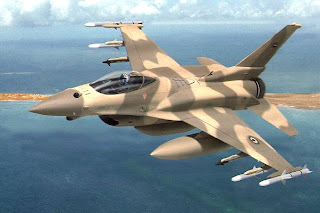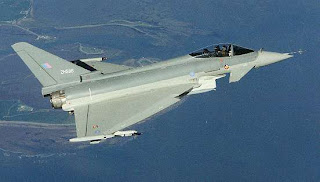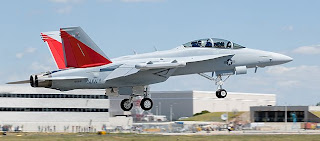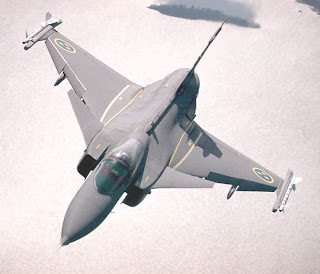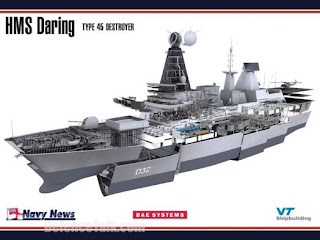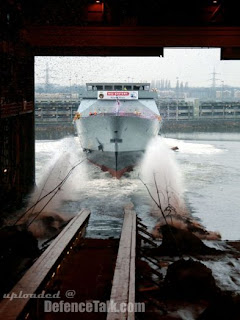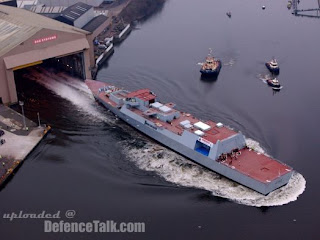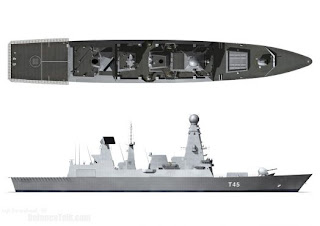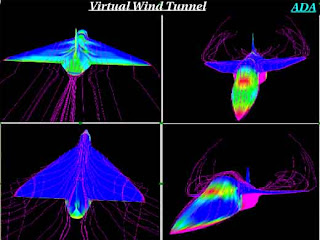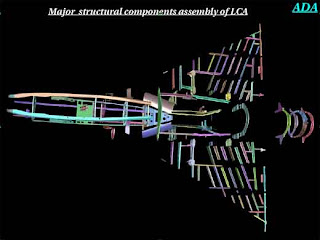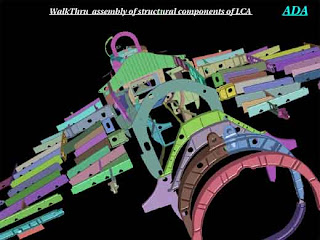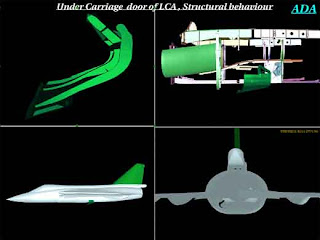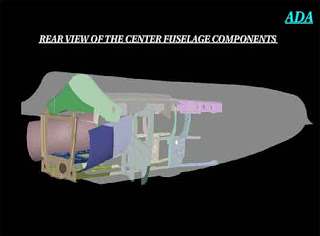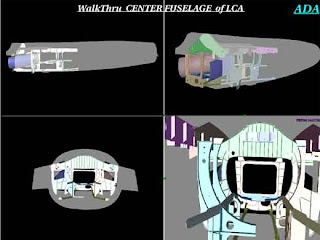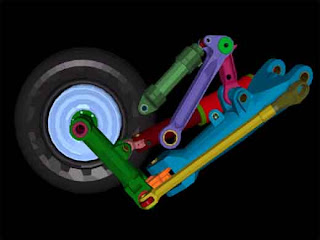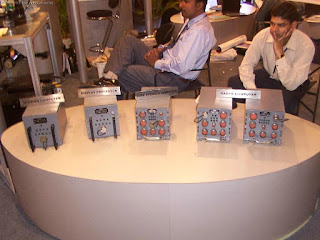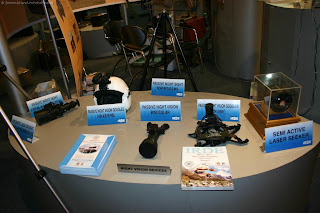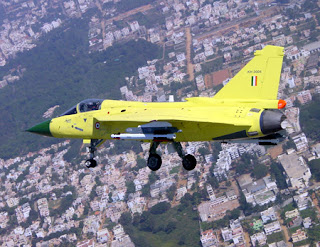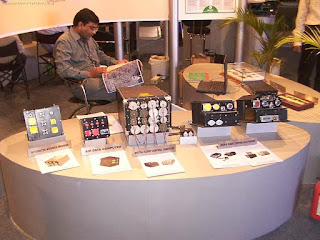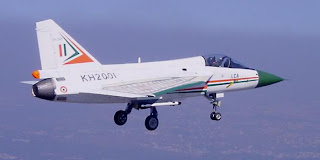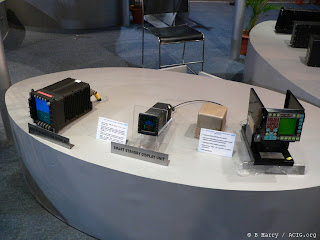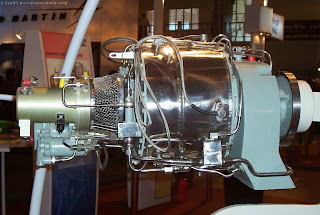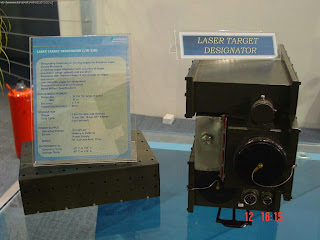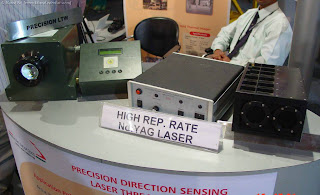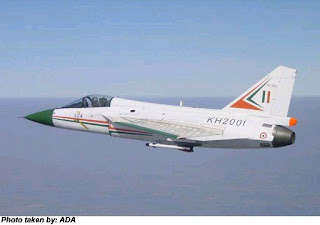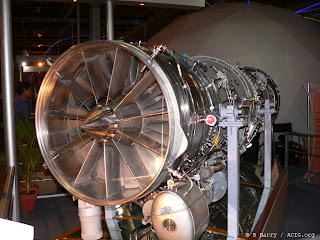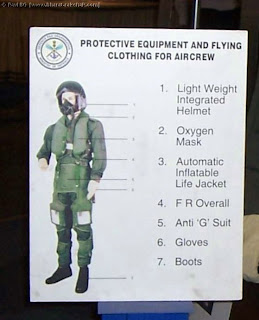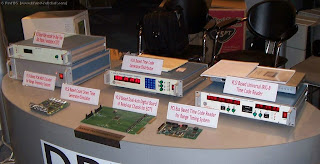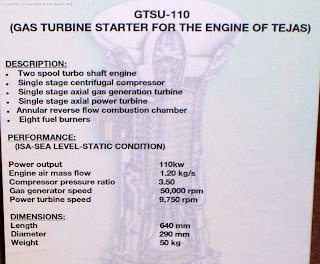Second in the series is the swedish plane- SAAB JAS 39 GRIPEN(GRIFFIN) LIGHT WEIGHT MULTIROLE FIGHTER
The Gripen multi-role fighter aircraft, developed by Saab, was first flown in December 1988 and entered operational service with the Swedish Air Force in 1997. Gripen has been developed by an industrial consortium consisting of Saab, Ericsson Microwave Systems, Volvo Aero Corporation, Saab Avionics and FFV Aerotech. A joint venture company, Gripen International, has been set up by Saab and BAE Systems to market the Gripen for export markets.Regarded as the first of the Fourth Generation series of fighters anywhere, the JAS 39 Gripen represents one of the best engineered and designed fighters in the skies today - some regard it as the most capable as well.
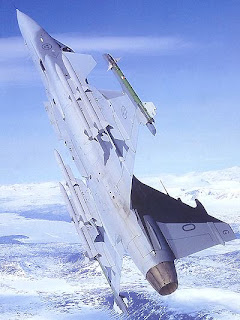 JAS 39A is the single-seater version of the Gripen. A two-seater JAS 39B operational trainer variant of Gripen is available. The JAS 39B is equipped with the same avionics and weapons suite as the JAS 39A, with the exception of the gun. JAS 39C is the single seat Batch 3 and export standard version, which was first delivered to the Swedish Air Force in September 2002. JAS 39C has colour cockpit displays, on-board oxygen generation system (OBOGS) and in-flight refuelling capabilty. JAS 39D will be a similarly upgraded two seater.The base model is piloted by one crewman in an ergonomically-designed cockpit setting. The cockpit features three multi-function computer displays and a wide-angled heads up display. The fighter is designed with versatility in mind, thusly the system can be switched from a fighter, reconnaissance or strike role on the fly - allowing the pilot to accomplish all three types of sorties whenever needed.
JAS 39A is the single-seater version of the Gripen. A two-seater JAS 39B operational trainer variant of Gripen is available. The JAS 39B is equipped with the same avionics and weapons suite as the JAS 39A, with the exception of the gun. JAS 39C is the single seat Batch 3 and export standard version, which was first delivered to the Swedish Air Force in September 2002. JAS 39C has colour cockpit displays, on-board oxygen generation system (OBOGS) and in-flight refuelling capabilty. JAS 39D will be a similarly upgraded two seater.The base model is piloted by one crewman in an ergonomically-designed cockpit setting. The cockpit features three multi-function computer displays and a wide-angled heads up display. The fighter is designed with versatility in mind, thusly the system can be switched from a fighter, reconnaissance or strike role on the fly - allowing the pilot to accomplish all three types of sorties whenever needed.The Gripen is built on a delta wing design that sits far aft of the main fuselage. Forward-placed canards are fully reactive and supply the airframe with stability at slower speeds and agility at higher speeds. A reported twenty to thirty percent of the body-covering material is made from carbon fibers and the system as a whole is said to maintain some stealth characteristics in the way of diminutive radar and heat signatures.
 Gripen need only 2,625 feet of runaway space to take off or land, thus utilizing any road in the country to mount attacks or defend in the event of an all-scale invasion. The system as a whole is designed to be minimal to maintain in terms of battlefield conditions thusly a single technician and some enlisted hands can keep and make ready the aircraft for flight in under fifteen minutes of preparation.
Gripen need only 2,625 feet of runaway space to take off or land, thus utilizing any road in the country to mount attacks or defend in the event of an all-scale invasion. The system as a whole is designed to be minimal to maintain in terms of battlefield conditions thusly a single technician and some enlisted hands can keep and make ready the aircraft for flight in under fifteen minutes of preparation.The Gripen is fitted with an Ericsson PS-05/A multi-mode pulse-Doppler radar system capable of tracking multiple targets at one time. The targeting and communications system in highly integrated with other Gripens (with the Tactical Information Data Link System) allowing for a clear line of communication between flight groups for added versatility.The Ericsson PS-05 long-range multi-purpose pulse Doppler radar has air-to air operating modes covering long-range search, multi-target track-while-scan, multiple priority target tracking, air combat quick search modes, raid assessment and beyond visual range (BVR) missile mid-course updates. The air-to-surface modes include long-range search/target identification, multiple priority target tracking, high-resolution, real beam mapping, air-to-surface ranging and Doppler beam sharpening (DBS).The aircraft is equipped with a forward-looking infrared (FLIR) sensor and will have the Saab IR-Otis infrared search and track system (IRST).

The Gripen cockpit is dominated by three large, full color, Multi-Function Displays (MFDs) and a wide angle diffractive optics Head-Up Display (HUD) with a holographic combiner. A highly efficient human-machine interface has been integrated into the Gripen to substantially ease pilot workload, particularly in combat situations. This provides a Gripen pilot with outstanding situational awareness, ensuring unrivalled operational effectiveness. It also increases the time available for tactical decision-making allowing the pilot to use the aircraft and weapons system to maximum effect.
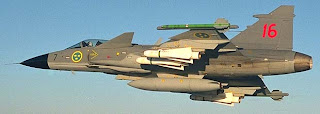 The main functions of each display are as follows:Head-Up Display (HUD) - providing FLIR imagery and weapon aiming information superimposed on the outside world at all altitudes.Flight Data Display (FDD) - provides flight data and system status information about the engine, fuel and external stores. Horizontal Situation Display (HSD) - provides navigational and tactical mission data superimposed on an electronic map of selectable scale. Multi-Sensor Display (MSD) - presents information from the radar, FLIR imagery and other sensors. Flight and fire control data are also superimposed.
The main functions of each display are as follows:Head-Up Display (HUD) - providing FLIR imagery and weapon aiming information superimposed on the outside world at all altitudes.Flight Data Display (FDD) - provides flight data and system status information about the engine, fuel and external stores. Horizontal Situation Display (HSD) - provides navigational and tactical mission data superimposed on an electronic map of selectable scale. Multi-Sensor Display (MSD) - presents information from the radar, FLIR imagery and other sensors. Flight and fire control data are also superimposed.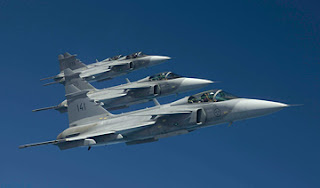 The aircraft has VHF/UHF transmitters and receivers from SaabTech Vectronics, and a Thales TSC 2000 identification friend or foe (IFF) system. An air-to-air data link allows real-time exchange of tactical data within and between co-operating air units. In the attack and reconnaissance role, the data link allows radar-derived surface data to be transferred from one Gripen to a group of radar-silent attacking aircraft.
The aircraft has VHF/UHF transmitters and receivers from SaabTech Vectronics, and a Thales TSC 2000 identification friend or foe (IFF) system. An air-to-air data link allows real-time exchange of tactical data within and between co-operating air units. In the attack and reconnaissance role, the data link allows radar-derived surface data to be transferred from one Gripen to a group of radar-silent attacking aircraft.The Volvo Aero Corporation RM12 is a modular, fuel efficient, low bypass ratio afterburning turbofan in the 80 KN (18,000lb) thrust class. A digital engine control system automatically monitors the engine parameters and automatically switches on the back-up systems if required. A condition monitoring system registers the flight data. The air-to-air refuelling probe is retracted into the aircraft to retain the aerodynamic profile
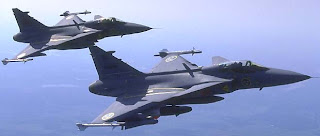 The Gripen cockpit is dominated by three large, full color, Multi-Function Displays (MFDs) and a wide angle diffractive optics Head-Up Display (HUD) with a holographic combiner. A highly efficient human-machine interface has been integrated into the Gripen to substantially ease pilot workload, particularly in combat situations. This provides a Gripen pilot with outstanding situational awareness, ensuring unrivalled operational effectiveness. It also increases the time available for tactical decision-making allowing the pilot to use the aircraft and weapons system to maximum effect.A fully fused and integrated data flow, processed by all-digital systems, gives Gripen the power, intelligence and agility to fight the 'information war' - for the pilot as well as the commander - to the maximum operational effect. Gripen incorporates the world's most developed datalink, which increases situation awareness and combat effectiveness while shortening the sensor-to-shooter loop to near real-time.
The Gripen cockpit is dominated by three large, full color, Multi-Function Displays (MFDs) and a wide angle diffractive optics Head-Up Display (HUD) with a holographic combiner. A highly efficient human-machine interface has been integrated into the Gripen to substantially ease pilot workload, particularly in combat situations. This provides a Gripen pilot with outstanding situational awareness, ensuring unrivalled operational effectiveness. It also increases the time available for tactical decision-making allowing the pilot to use the aircraft and weapons system to maximum effect.A fully fused and integrated data flow, processed by all-digital systems, gives Gripen the power, intelligence and agility to fight the 'information war' - for the pilot as well as the commander - to the maximum operational effect. Gripen incorporates the world's most developed datalink, which increases situation awareness and combat effectiveness while shortening the sensor-to-shooter loop to near real-time.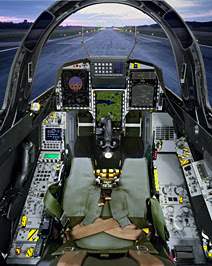 The main functions of each display are as follows:Head-Up Display (HUD) - providing FLIR imagery and weapon aiming information superimposed on the outside world at all altitudes.Flight Data Display (FDD) - provides flight data and system status information about the engine, fuel and external stores. Horizontal Situation Display (HSD) - provides navigational and tactical mission data superimposed on an electronic map of selectable scale. Multi-Sensor Display (MSD) - presents information from the radar, FLIR imagery and other sensors. Flight and fire control data are also superimposed.
The main functions of each display are as follows:Head-Up Display (HUD) - providing FLIR imagery and weapon aiming information superimposed on the outside world at all altitudes.Flight Data Display (FDD) - provides flight data and system status information about the engine, fuel and external stores. Horizontal Situation Display (HSD) - provides navigational and tactical mission data superimposed on an electronic map of selectable scale. Multi-Sensor Display (MSD) - presents information from the radar, FLIR imagery and other sensors. Flight and fire control data are also superimposed.Saab Avionics is responsible for the EWS 39 electronic warfare suite, which has been ordered by the Swedish Air Force. EWS 39 is an integrated EW system that provides radar warning, electronic support measures and chaff and flare decoy dispensers.
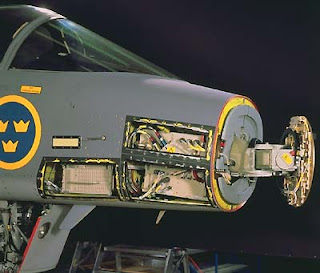 The Gripen has seven external hardpoints for carrying payloads: one at each wingtip, two under each wing and one on the fuselage centreline. The air-to-air missiles include MBDA (formerly Matra BAe Dynamics) MICA, Raytheon AIM-120B AMRAAM and Lockheed Martin/Raytheon Sidewinder AIM-9L (Swedish Air Force Designation RB74). Sidewinder, mounted on the wingtips, is an all-aspect attack, short-range missile for enhanced dogfight capability. Air-to-surface missiles include the radar-guided Saab RBS15F anti-ship missile and Raytheon Maverick missile. Later versions of the aircraft for Sweden will be armed with the short-range Diehl BGT Defence IRIS-T air-to-air missile and the MBDA Meteor Beyond Visual Range (BVR) air-to-air missile. Deliveries of IRIS-T began in December 2005. Meteor is due to enter service in 2010. The Saab Bofors/MBDA Taurus KEPD 350 long-range standoff missile, with a range of 350km, has been successfully flight tested on the Gripen.The internally mounted 27mm Mauser high-energy gun can operate in an automatic radar-guided aiming mode. The stand-off dispenser is the DWF39 from EADS (formerly DaimlerChrysler Aerospace) and Bofors. The Bofors ARAK 70 rocket pod is cleared for carriage on the Gripen.
The Gripen has seven external hardpoints for carrying payloads: one at each wingtip, two under each wing and one on the fuselage centreline. The air-to-air missiles include MBDA (formerly Matra BAe Dynamics) MICA, Raytheon AIM-120B AMRAAM and Lockheed Martin/Raytheon Sidewinder AIM-9L (Swedish Air Force Designation RB74). Sidewinder, mounted on the wingtips, is an all-aspect attack, short-range missile for enhanced dogfight capability. Air-to-surface missiles include the radar-guided Saab RBS15F anti-ship missile and Raytheon Maverick missile. Later versions of the aircraft for Sweden will be armed with the short-range Diehl BGT Defence IRIS-T air-to-air missile and the MBDA Meteor Beyond Visual Range (BVR) air-to-air missile. Deliveries of IRIS-T began in December 2005. Meteor is due to enter service in 2010. The Saab Bofors/MBDA Taurus KEPD 350 long-range standoff missile, with a range of 350km, has been successfully flight tested on the Gripen.The internally mounted 27mm Mauser high-energy gun can operate in an automatic radar-guided aiming mode. The stand-off dispenser is the DWF39 from EADS (formerly DaimlerChrysler Aerospace) and Bofors. The Bofors ARAK 70 rocket pod is cleared for carriage on the Gripen. In terms of export, South Africa is to be the first receiver of the Gripen aircraft beginning in 2007. Several other countries have expressed interest in the system including Hungary, which has leased over a dozen Gripen for its air force.The Swedish Air Force has ordered 204 Gripen (including 28 of the two-seater version) for two operational squadrons, with deliveries continuing till 2007. In November 1998, the South African Air Force ordered 28 Gripen multi-role aircraft (19 single-seat and nine dual-seat). Denel Aviation of South Africa will produce part of the centre fuselage. First flight was in November 2005 and deliveries are to begin in 2008. In November 2001, Hungary signed a Memorandum of Understanding for the lease of 14 aircraft - 12 JAS 39A single-seat and two JAS 39B. In February 2003, Sweden and Hungary signed an amendment to the lease contract and both the single seated and the twin seated aircraft will be upgraded to C and D standard. The amendment also says that Hungary will purchase the aircraft after the lease period. Deliveries will begin in 2006.
In terms of export, South Africa is to be the first receiver of the Gripen aircraft beginning in 2007. Several other countries have expressed interest in the system including Hungary, which has leased over a dozen Gripen for its air force.The Swedish Air Force has ordered 204 Gripen (including 28 of the two-seater version) for two operational squadrons, with deliveries continuing till 2007. In November 1998, the South African Air Force ordered 28 Gripen multi-role aircraft (19 single-seat and nine dual-seat). Denel Aviation of South Africa will produce part of the centre fuselage. First flight was in November 2005 and deliveries are to begin in 2008. In November 2001, Hungary signed a Memorandum of Understanding for the lease of 14 aircraft - 12 JAS 39A single-seat and two JAS 39B. In February 2003, Sweden and Hungary signed an amendment to the lease contract and both the single seated and the twin seated aircraft will be upgraded to C and D standard. The amendment also says that Hungary will purchase the aircraft after the lease period. Deliveries will begin in 2006. 
In June 2004, the Czech Republic signed a leasing agreement with the Swedish Government for 14 new Gripen (12 single-seat JAS 39C and two two-seat JAS 39D) for a period of ten years. The aircraft were delivered between April and August 2005.
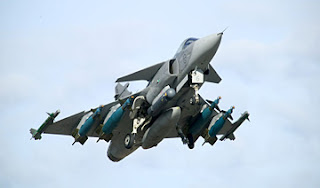
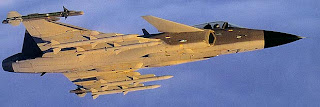

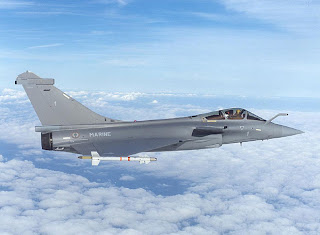
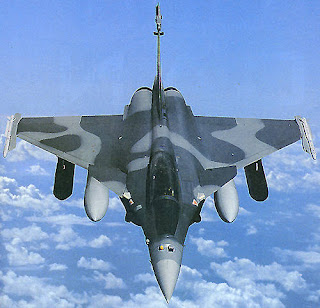


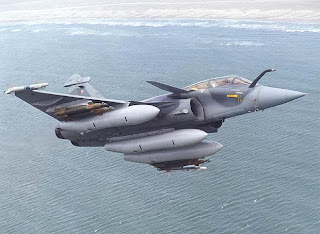




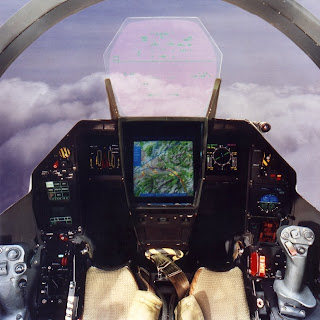 Messier-Dowty provides the "jumper" landing gear, designed to spring out when the aircraft is catapulted by the nose gear strut.
Messier-Dowty provides the "jumper" landing gear, designed to spring out when the aircraft is catapulted by the nose gear strut.
